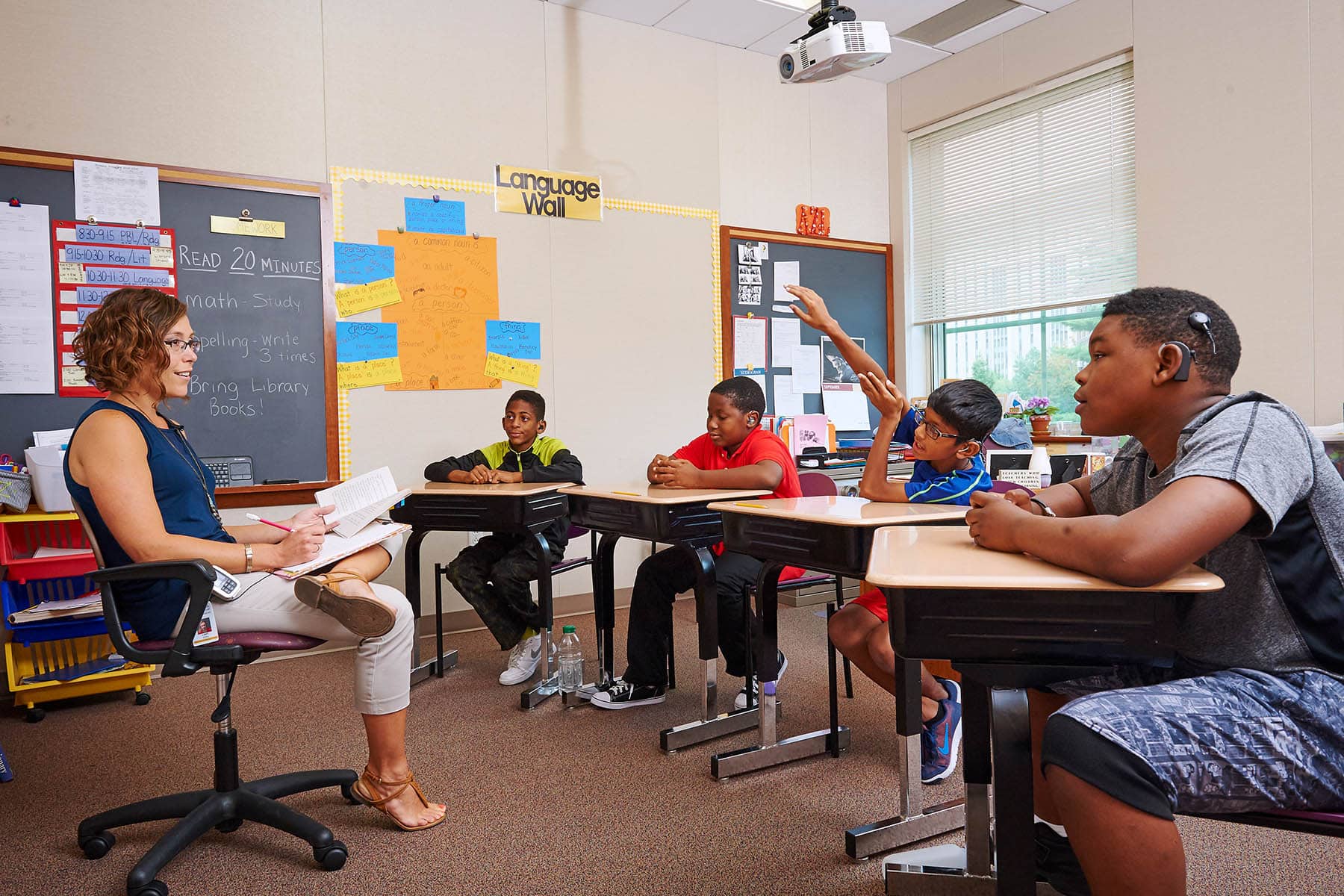What is background noise and what can it affect?
Background noise is any noise present that interferes with the speaker. It can affect the clarity of speech heard, as well as the child’s attention to tasks and behavior in the classroom.
Who does background noise affect?
Background noise affects many children, not just children with hearing loss! Background noise can affect children with attention and behavior disorders, children with language delays, bilingual children, and children with auditory processing disorder.
Where is background noise commonly heard?
In a school, background noise can be heard in the classroom, in the cafeteria, in the hallways, on the playground… everywhere!
When is background noise present?
Although there are times of the day in which background noise will not be as great, it is something that, realistically, is unavoidable. Although you can (somewhat!) control the voices in your classroom, it is nearly impossible to control voices in the hallway, yelling on the playground, or sounds within the environment (e.g., construction, traffic, a loud AC unit, etc.).
Why is it important to reduce background noise in the classroom?
Being mindful of and making attempts to minimize background noise will benefit the entire class. Decreasing background noise increases all students’ access to clear speech. This allows students to increase their attention and participation, while decreasing their frustration level (and the negative behaviors that can often accompany frustration).
How can background noise be reduced?
Thankfully there are some quick and affordable options to decrease noise in the classroom and create a listening and learning-friendly environment for students.
- Use rugs or carpeting: Placing rugs or carpet around the room helps to absorb sound, while also making the room more visually appealing and comfortable for students.
- Hang soft materials on the walls: Corkboards and felt boards can be used to display important information and students’ work, while also serving to absorb noise.
- Place soft tips on the bottom of chair and tables: Chairs and tables are moved around frequently in the classroom, causing unnecessary noise. Adding soft tips to the bottoms of furniture can decrease this noise significantly.
- Hang curtains and blinds on the windows: Aside from serving their purpose to avoid glares from the sunlight, curtains and blinds can be used to help to absorb noise occurring in the classroom, as well as outside the classroom.
- Close doors and windows: The world is noisy, and although we can’t control all of the outside distractions, we can limit their impact on the noise in the classroom by closing doors and windows when possible.
- Turn off loud noise sources: It’s inevitable that noise-producing equipment (e.g., projectors, fans, heaters) is needed in the classroom; however, when this equipment is not being used, turn it off. This will not only reduce noise but also save energy.
- Re-arrange furniture: Placing students’ desks and workspaces throughout the room, instead of in rows, reduces the amount of sound bouncing off of walls.
- Educate students: Hold students to the expectation of only talking when it is their turn. Although a common classroom rule, students can be taught that this is not only respectful behavior but also a simple way to decrease noise.

Jessica Klein is a speech-language pathologist. In addition to working at CID, she has worked in a public school setting, serving elementary-age students. Ms. Klein has co-authored several workshops, presented at a variety of professional conferences and written an online course about developing literacy skills in students who are deaf and hard of hearing. Most recently, she co-authored the SPICE for Life Second Edition auditory training curriculum.












